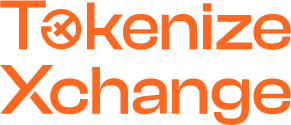The Blockchain Trilemma
The thing about blockchain is that it’s a rabbit hole filled with twists and surprises, but also one that you’ll emerge from with an inkling of what the future might actually be. In the case of blockchain, this comes in the form of a ‘trilemma’ or the three key issues that blockchain developers have to address —Decentralisation, Scalability, and Security, without compromising one of them for the sake of the other two.
Blockchain is a game-changer. Its potential applications across a range of industries make it a formidable ally on our surge towards a digitalized world. But with any new technology, there will be challenges along the way.
The current sentiment is that it’s extremely difficult to achieve all three objectives, hence the ‘trilemma’. But is it really an impossible feat?
Let’s breakdown each aspect:
Decentralization
The word ‘decentralization’ is synonymous with blockchain networks. This means that networks should not be reliant on a central authority to validate transfers. Instead, the responsibility lies with the network’s individual nodes and how quickly they can come to a consensus to authenticate a transfer.
The problem with an “overly decentralized” system is that it’s not scalable, or it’s too slow.
An example would be Bitcoin and Ethereum’s current PoW (Proof of Work) mechanism. In these networks, there’s a substantial amount of miners trying to authenticate transfers by solving complex mathematical problems.
This creates a system that’s very decentralized and secure, but also one that’s rather inefficient and slow as compared to if transactions were just confirmed by a single/more centralized authority.
See the ‘trilemma’?
Scalability
This refers to a blockchain’s capacity to handle a large number of transactions within a short period of time. As aforementioned, PoW blockchains are unable to scale effectively, a trade-off for decentralization and security. It’s reported that the Bitcoin blockchain can only process a mere 3.86 transactions per second (TPS).

The potential solution to this is the PoS (Proof of Stake) mechanism, currently utilised by networks like EOS (which uses Delegated Proof of Stake), Tron, and soon-to-be in Ethereum 2.0. It’s significantly more scalable, as there’s no need to solve a time-consuming equation. EOS is said to be able to process approximately 4000 TPS, a huge step up from PoW enabled networks.
But remember the oh-so-annoying ‘trilemma’? The EOS network has only 21 block producers — or nodes in control of the blockchain, which makes it scalable, but rather centralized in nature.
Security
With the cryptocurrency market value skyrocketing in recent years, security is undoubtedly one of the key elements of blockchain networks.
However, with regard to the ‘trilemma’, a shift towards a more centralized network to increase scalability could potentially signify a reduction in security.
This is because when there’s less distribution and more consolidation, it becomes easier to take control of a network and manipulate it for personal gains.
If you’re already seeing triangles, don’t fret!
While the ‘trilemma’ might seem like a significant challenge, new ideas are constantly being developed. Solutions such as the PoS mechanism and Sharding (breaking down the network into smaller sub-sets known as ‘shards’ and then processing them simultaneously) might help to increase scalability while maintaining decentralization and security.
As for Tokenize Xchange, we strongly believe in the future of “blockchain interoperability”, or cross-chain technology.
Most blockchains currently operate in isolation, but with emerging protocols such as Polkadot facilitating the transfer of data between blockchains, we think that many current complications can be resolved. The best is yet to come 😉
Subscribe to Tokenize Blog
Get updated with our guides, tips, and market news to help you in your investment.
Follow Tokenize Exchange on Facebook, Telegram, Medium, Twitter, Instagram.
Disclaimer
Cryptocurrencies are subjected to high market risk and volatility despite high growth potential. Users are strongly advised to do their research and invest at their own risk.






